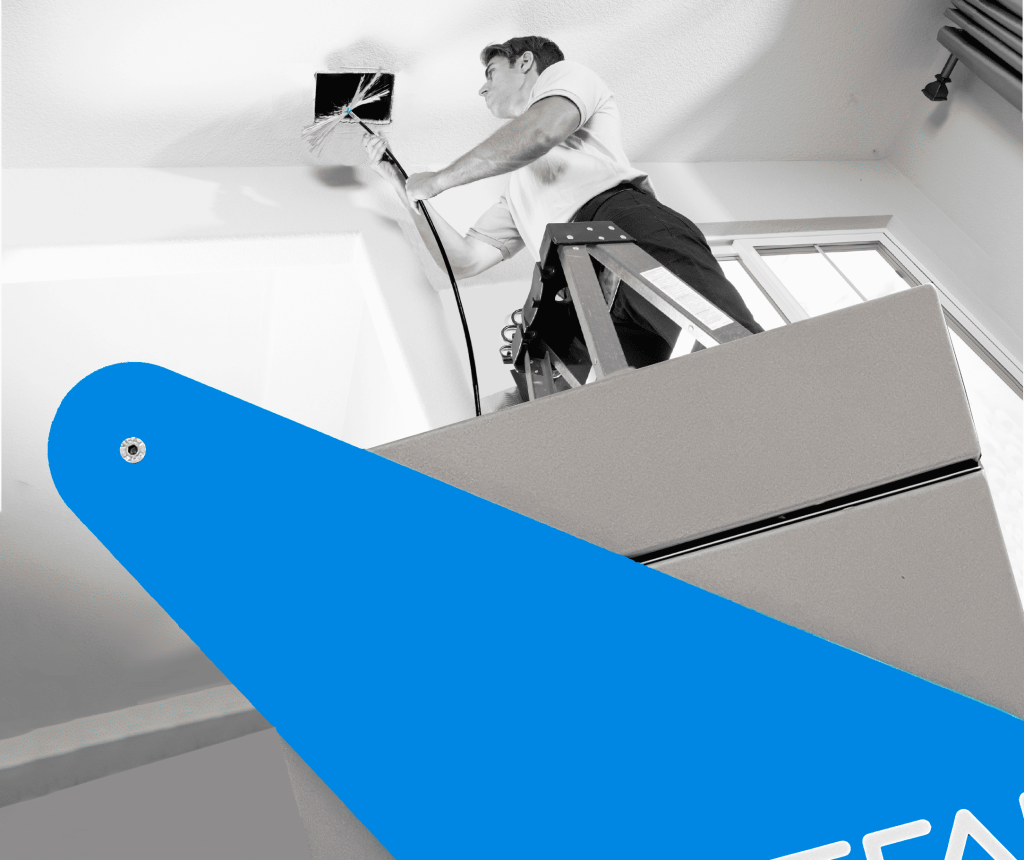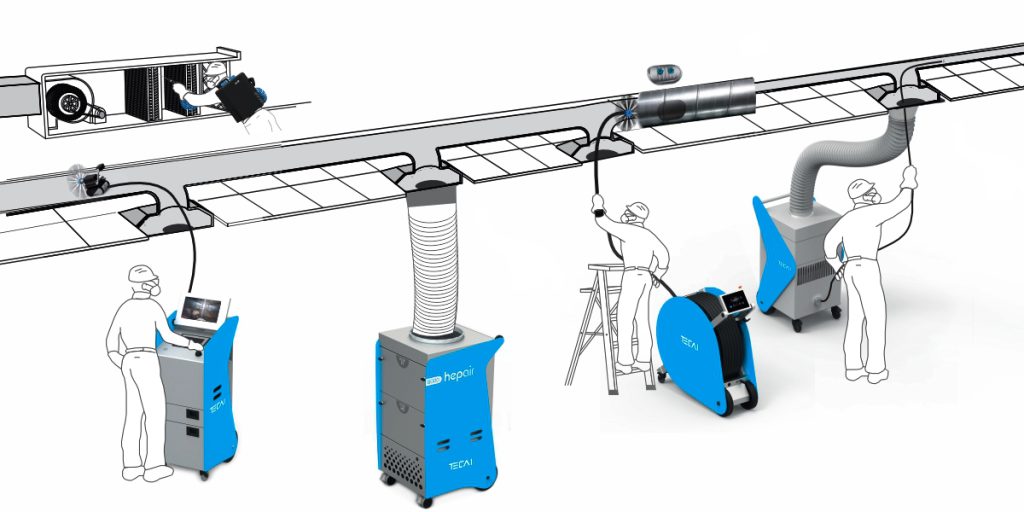Cleaning of ventilation and air conditioning systems
Ensure indoor air quality and energy efficiency by keeping ducts, treatment units, and grilles free of dust,
biofilm, and contaminants. Lack of proper maintenance increases health risks and operating costs.
biofilm, and contaminants. Lack of proper maintenance increases health risks and operating costs.

Problems with HVAC system cleaning
Ventilation and air conditioning systems accumulate particles, fungi, and microorganisms that are dispersed throughout the building. Dirty ducts reduce airflow, increase electricity consumption, and can trigger outbreaks of Legionella or sick building syndrome.
Risks and consequences
- Spread of allergens and pathogens (Legionella, molds).
- Increased aerodynamic resistance and energy consumption.
- Decreased lifespan of fans and coils.
- Non-compliance with UNE 100012 and ISO 16890 regulations
Recommended cleaning process
1
Inspection with a robotic camera to assess dirt
2
Disassembly of registers and sealing of sensitive areas
3
Mechanical brushing or directed compressed air in ducts
4
Vacuuming with HEPA filters to contain particles
Elements that require periodic cleaning
- Air ducts and plenums.
- AHUs: filters, coils, and drain pans.
- Grilles, diffusers, and dampers.
- Rooftop turret/extractor and fans.
- Contaminated probes and control elements.
Benefits of an HVAC cleaning program
- Improved indoor air quality and odor reduction.
- Estimated energy savings of 15% due to lower pressure drop.
- Mechanical brushing or directed compressed air in ducts.
- Vacuuming with HEPA filters to contain particles.

RELATED EQUIPMENT
Tecai Range
Discover Tecai technology, designed for professional cleaning of ducts and ventilation and air conditioning units.

